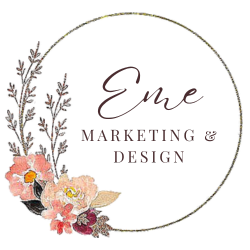
In today’s competitive marketplace, the importance of effective branding cannot be overstated. For entrepreneurs, establishing a solid brand can differentiate between obscurity and success. A brand isn’t just a logo or a catchy tagline; it’s the complete experience your customers have with your business. From the visual identity to the voice and values your company embodies, every aspect contributes to the overall perception of your brand. Here, we’ll explore essential branding secrets to help entrepreneurs create and sustain a powerful brand presence.
1. Understand Your Brand Purpose
Your brand purpose is the foundation for all other branding efforts. It’s the reason your business exists beyond making a profit. Start by asking yourself these questions:
- Why did you start your business?
- What problem are you solving?
- What values drive your company?
A clear and compelling brand purpose resonates with customers, fostering loyalty and differentiation in the market. For example, TOMS Shoes’ brand aims to improve lives through business. This mission drives their “One for One” campaign, where they donate a pair of shoes for every pair sold, creating an emotional connection with their audience.
2. Define Your Target Audience
Understanding your target audience is crucial for effective branding. You must know your customers, what they care about, and how they engage with brands. Conduct thorough market research to create detailed buyer personas. Consider factors such as:
- Demographics (age, gender, location, income)
- Psychographics (lifestyle, values, interests)
- Behavior (buying habits, brand loyalty, decision-making process)
Once you have a clear picture of your target audience, tailor your branding efforts to speak directly to them. Your brand messaging, design, and marketing strategies should align with the preferences and expectations of your ideal customers.
3. Craft a Unique Brand Identity
A strong brand identity is memorable and instantly recognizable. It includes visual elements like logos, color schemes, typography, and imagery, as well as your brand’s overall aesthetic and tone. Here’s how to develop a compelling brand identity:
- Logo Design: Your logo should be simple, versatile, and reflective of your brand’s personality. Consider hiring a professional designer to create a logo that stands the test of time.
- Color Palette: Colors evoke emotions and can influence perception. Choose a color scheme that aligns with your brand’s values and appeals to your target audience.
- Typography: Consistent use of fonts adds to brand recognition. Select fonts that are easy to read and match your brand’s style.
- Imagery: Use high-quality images that convey your brand’s message and appeal to your audience.
Take Coca-Cola, for example. Their logo, color scheme (red and white), and typography have remained consistent over the years, making their brand instantly recognizable worldwide.
4. Develop a Consistent Brand Voice
Your brand voice is how you communicate with your audience. It should be consistent across all touchpoints, from your website and social media to customer service and advertising. To develop a strong brand voice, consider the following:
- Tone: Is your brand casual and friendly or formal and professional? Choose a tone that resonates with your audience.
- Language: Use language that aligns with your brand’s personality. Avoid jargon and use words that your audience understands and relates to.
- Storytelling: Share your brand’s story and values in a way that connects emotionally with your audience. Authenticity is key.
For instance, Mailchimp’s brand voice is friendly, approachable, and humorous. It uses casual language and playful imagery, making its brand feel more human and relatable.
5. Deliver Consistent Brand Experience
Consistency is crucial in branding. Every customer interaction with your brand should reflect the same values and quality. This includes:
- Website: Your website should be user-friendly, visually appealing, and reflective of your brand identity.
- Social Media: Maintain a consistent posting schedule and use your brand voice in all social media interactions.
- Customer Service: Train your team to provide excellent service that aligns with your brand values.
- Packaging: If you sell physical products, your packaging should be an extension of your brand identity.
Apple excels at delivering a consistent brand experience. From its sleek product designs and minimalist packaging to its user-friendly website and helpful customer service, every touchpoint reinforces its brand values of innovation, quality and simplicity.
6. Build Strong Brand Associations
Brand associations are the attributes and qualities that come to mind when people think about your brand. Positive associations can enhance brand equity and loyalty. To build strong brand associations:
- Partnerships: Collaborate with other reputable brands that share your values and audience.
- Sponsorships: Sponsor events or causes that align with your brand purpose.
- Influencers: Partner with influencers who embody your brand’s values and can authentically promote your products.
For example, Red Bull’s association with extreme sports and adventure has solidified its energetic, daring, and youthful brand identity.
7. Engage with Your Audience
Engagement is essential to building a loyal customer base. Regularly interact with your audience through social media, email marketing, and other channels. Encourage user-generated content, such as reviews, testimonials, and social media posts. Show appreciation for your customers by responding to their comments and messages promptly.
Starbucks excels at engaging with its audience. It actively responds to customer feedback on social media and encourages customers to share their experiences using branded hashtags. This fosters a sense of community and strengthens brand loyalty.
8. Monitor and Adapt Your Brand Strategy
Branding is not a one-time effort. To stay relevant and practical, it requires ongoing monitoring and adaptation. Regularly assess your brand’s performance through metrics such as brand awareness, customer satisfaction, and engagement rates. Be open to feedback and willing to make adjustments as needed.
Consider how PepsiCo revamped its brand strategy to appeal to health-conscious consumers. They introduced healthier product options and updated their branding to emphasize wellness and sustainability, aligning with changing consumer preferences.
9. Protect Your Brand
Protecting your brand is essential to maintaining its integrity and value. This involves:
- Trademarks: Register your brand name, logo, and tagline to prevent unauthorized use.
- Brand Guidelines: Create a comprehensive brand guideline document that outlines the proper use of your brand elements.
- Reputation Management: Monitor online mentions of your brand and address any negative feedback promptly and professionally.
Nike is vigilant about protecting their brand. They have strict brand guidelines and actively monitor and take action against any unauthorized use of their trademarks.
10. Leverage Digital Marketing
Digital marketing is a powerful tool for building and promoting your brand. Utilize various digital channels to reach a wider audience and reinforce your brand identity. Consider:
- Content Marketing: Create valuable content that reflects your brand’s expertise and solves your audience’s problems.
- SEO: Optimize your website and content for search engines to increase visibility and attract organic traffic.
- Social Media Marketing: Use social media platforms to engage with your audience, share your brand story, and promote your products or services.
- Email Marketing: Build an email list and send regular updates, promotions, and personalized content to nurture customer relationships.
Warby Parker has effectively leveraged digital marketing to build its brand. Its engaging content, user-friendly website, and active social media presence have helped it become a household name in eyewear.
Final Thoughts
Building a solid brand is a multifaceted process that requires a deep understanding of your purpose, audience and identity. By crafting a unique brand identity, maintaining consistency, engaging with your audience and leveraging digital marketing, entrepreneurs can create a memorable and impactful brand. Remember, branding is an ongoing effort that evolves with your business and the market. Stay true to your brand values, be open to adaptation, and continually strive to deliver exceptional customer experiences.
With these branding secrets, you can elevate your business and stand out in the competitive marketplace. Start building your brand today and watch it grow into a powerful asset that drives success and loyalty.
Create your brand
with our agency expertise.
Let our 20+ years of branding help you create your image.




